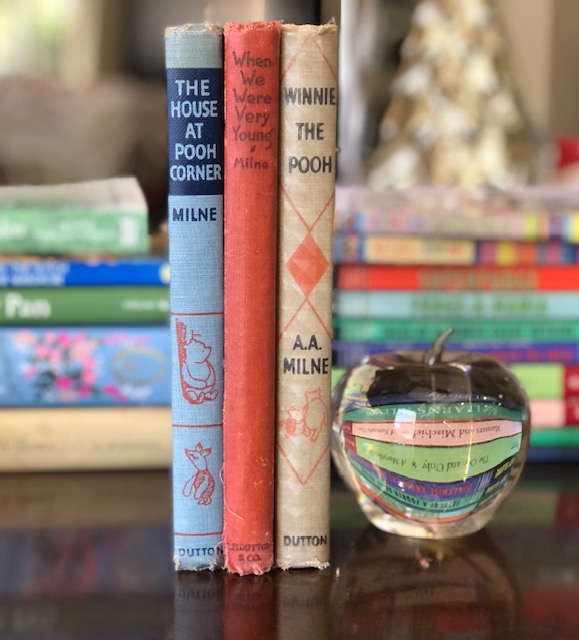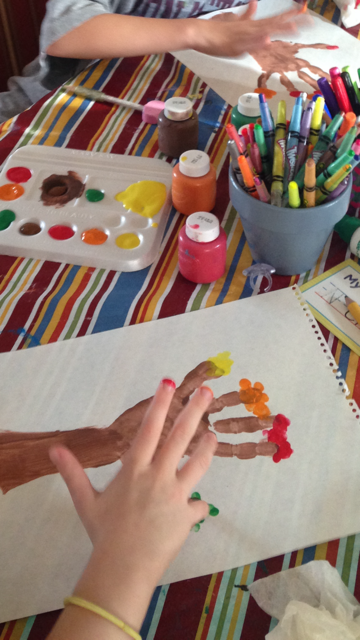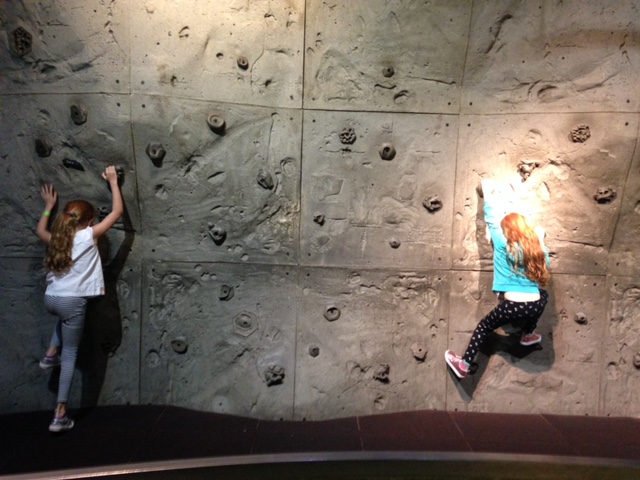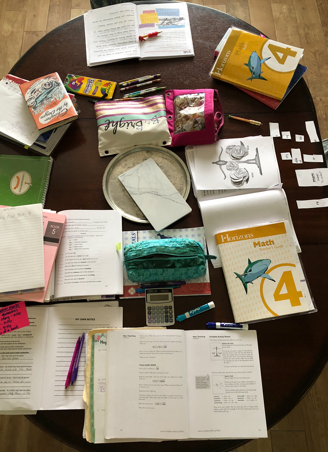Homeschooling Multiple Ages – How to Make it Work
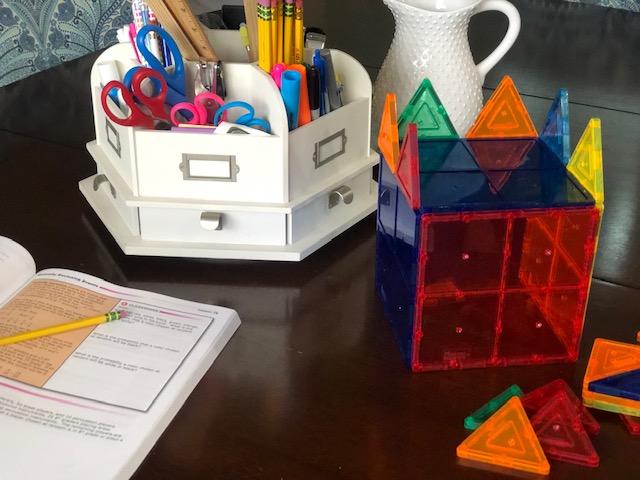
One of the first thoughts parents may have when just getting started with homeschooling, is how will they handle homeschooling multiple ages.
Some feel they won’t be able to effectively teach more than one child at once. Others feel it is easier having more children around to entertain or even help younger siblings when you are busy helping/having one-on-one learning time with another child.
However you cut it – it can be hard to grasp how it can be done and be done successfully. It can be done, but keep in mind it will look different for all.
Remember comparison is going to rob you of any joy in life, especially in parenting and homeschooling.
You find what works for you and your family.
Take bits from many people and places and piece them together for YOU. Below are some helpful tips to help you when trying to figure out how to homeschool multiple ages.
Bonus, these tips below may keep you from pulling your hair out when you’re having one of THOSE days!
Top tips for Homeschooling Multiple Ages:
Routine helps:
Whether you consider yourself to be an organized person or not, having a routine helps tremendously with homeschooling multiple ages. Starting your day with the same routine/rhythm is a way to help you and your children.
Some families thrive with a schedule. Some are more go with the flow as far as how they work best together. Whichever category you find yourself in, a homeschool routine is an easy way to fulfill both in a rewarding, multi-age learning environment!
Here are some popular ways some homeschool families start their day:
- Chores first, then schooling
- Read aloud time as a family
- Morning baskets or binders of daily activities like calendar work, handwriting etc.
- Reading from the bible
- Start with “specials” like art, science, history etc.
Keep in mind that this start to your routine may change through the year, and that’s fine! That’s part of the benefit of homeschooling – flexibility!
Currently my family does best when we start our homeschool day with our read-aloud books. Reading together, each of us (myself included) has a turn reading a chapter or two from different books we all enjoy.
Book series are great for this time – gives all something to look forward to. It also helps us all get into a positive mindset since we all love to read in our house 🙂
Choosing your start to your homeschool day, and making it a routine, is a great way to include everyone when homeschooling multiple ages.
Importance of individual time when homeschooling multiple ages:
When you’ve finished with whatever morning routine you find works best, planning how you’ll work with each child is the next step.
The main focus for each child individually will most likely be on math, and their language arts. Staggering subjects that need help like these core subjects, while planning time to work together on other subjects, is one really helpful way to make sure each child gets the time with you they need.
How to make individual time work when homeschooling multiple ages:
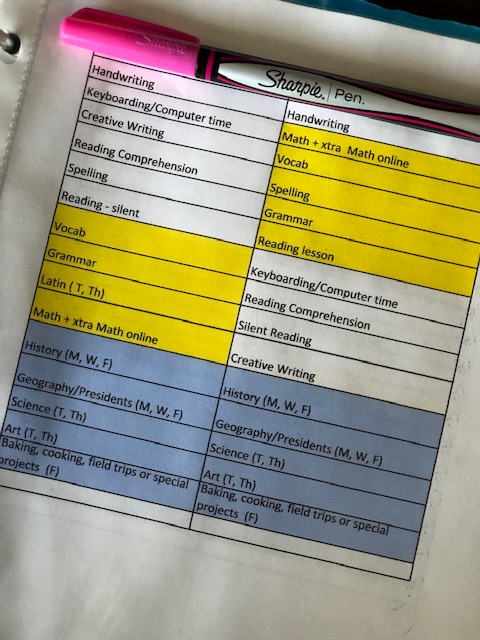
Some families do well with block scheduling. Using a block schedule simply means allowing designated time blocks for you to work with each child/subject.
Some families like to all work on math at once, with the parent floating between the kids. This would mean there is a set time block for math for all.
We tend to work best in our homeschool, when we work individually on math and language arts in our house. For this reason, I have our subjects staggered and blocked loosely. If I am working with one child on math, the other is tackling one of the subjects they can handle on their own. Or at least getting it started.
Silent reading or online math drills, online keyboarding etc. are other options for the other children to work on while you are working in a one-on-one block with another child.
This also provides a great time for independent learning to take place. Having to stay on task while knowing there is a time limit to how long they’re own their own is a great skill to work on, even at a young age.
For young siblings who aren’t quite ready for structured learning, having toys or coloring books that you keep aside for play only during school time, or by creating busy boxes, like these found here , help to make young ones feel included and give you some un-interrupted time to work with the older kiddos.
Learning together:
As I mentioned in the section above, keeping math & grammar “essentials” separate, and then working together on other subjects is a great balance of individual accountability and family togetherness.
Working together on some subjects is one of the best parts of homeschooling multiple ages. There are many different curriculum choices out there that can be adjusted to fit any age with a little creativity.
History, geography, science, art, music and so on can be so much fun to all learn together. Younger ones can color maps or draw pictures relating to the subjects being taught, while older children can delve deeper into the subject writing reports or working on a project.
Incorporating life skills like baking or cooking, doing crafts or spending time in nature can also be so rewarding and provide great learning experiences for all ages.
Watching a movie together as a family after finishing the book as a read-aloud is such a fun perk of homeschooling, one my family always looks forward to.
Games and documentaries are also great “together activities” for all ages.
Prevent burnout:
Preventing burnout is key when homeschooling multiple ages – actually it’s key in life!
Knowing your limits, and your childrens’ too will come with time spent together, if you don’t already know them. You 100% know your children best, and you know what their strengths and weaknesses are, but you’ll learn so much more about them homeschooling.
Knowing that some children prefer to be organized and check all the boxes and that some like to move & do jumping jacks while spelling words rather than sit helps you feel prepared.
But knowing when to give something a break, like a math lesson ending in tears (your child’s or yours!), or preposition memorization, or whatever it is, remember you can always take a breather and revisit it.
Ideas for when you’re all in need of a brain break:
Switch gears, go outside for a break if the weather is nice. Put on Cosmic Kids Yoga (a favorite in our house!). Make some tea or hot cocoa and take a few minutes to read separately or together.
Just give yourself and your children a break when needed. Again, this is a big perk of homeschooling! Your children will be ok and they will still learn even with these breaks.
Your children will learn soooo much more when they are in the right frame of mind, and you will too. Using the block schedule mentioned above, may help with preventing burnout too. Knowing that after 20 minutes you are moving on, regardless of finishing a worksheet will help relieve some pressure.
Another thing to keep in mind is all ages can benefit from a comfortable, happy, balanced learning environment. The hot trend that was popularized a few years back was the art of hygge can easily be part of your homeschool life. A good quote, defining the Danish word hygge (pronounced hue-gah) can be found below from hyggehouse.com/hygge :
“While there’s no one English word or simple definition to describe hygge, several can be used interchangeably to describe the idea of hygge such as cosiness, charm, happiness, ‘contentness’, security, familiarity, comfort, reassurance, kinship, and simpleness.”
Incorporating a cozy feeling into your days is such a nice part of being able to homeschool your children and will most definitely help you with homeschooling multiple ages.
One more thing to remember, is as your time together homeschooling grows, your confidence in teaching them will as well. That increase in confidence will only help you with learning the signs of burnout in both yourself and your children.
Having a few tips on how to prevent burnout, like the ones above, will come in handy.
Finding your groove, and being ok with it changing:
Knowing what works best for you and your children will most likely change throughout the school year, as it does throughout all of childhood.
Your routines will change, and your curriculum will change.
Being flexible and knowing you can adapt is so important to remember. As children grow their needs do change, but their need for your attention is still there, although maybe in a different way.
Changing diapers and making sure naptimes are kept up with, will give way to driving to afternoon activities and meeting with friends at the park.
Learning how to balance your attention to your children and make sure they’re learning while homeschooling multiple ages may seem challenging. With these tips and some trial and error of your own, you will find what works best for your family. After all, that’s really what parenting is all about!
